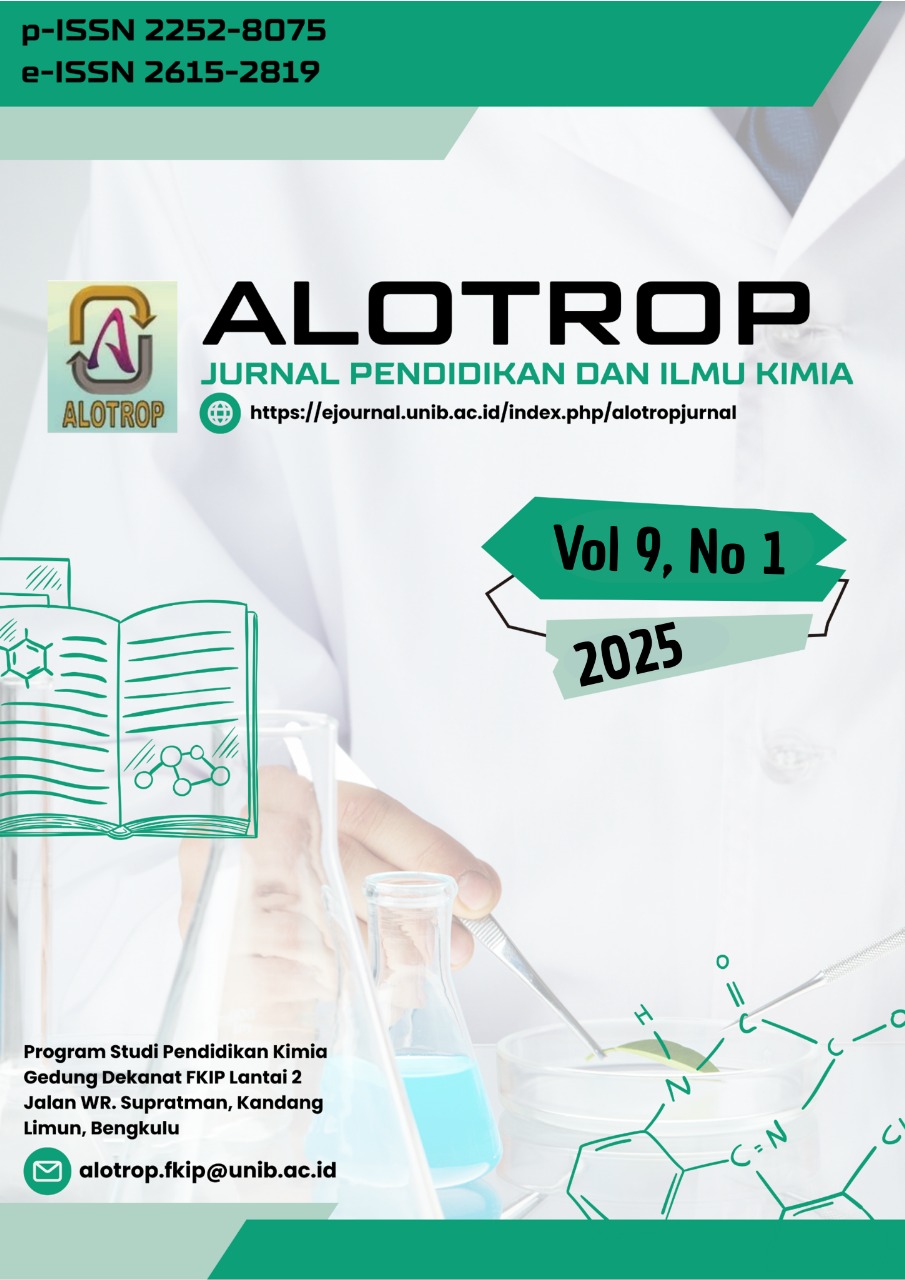Main Article Content
Abstract
Zinc oxide (ZnO) is a widely studied semiconductor material due to its broad range of applications. ZnO is known for its stability and can be synthesized using various methods. One of the approaches employed in this study is the co-precipitation method with a green synthesis approach. The green synthesis principle applied in this research involves minimizing the use of synthetic chemicals by substituting them with natural materials. Mango leaves (Mangifera sp.), which are readily available in the environment, contain secondary metabolites which can act as the capping agents in synthesis ZnO nanoparticle. The role of the capping agent is to limit particle interactions, thereby reducing agglomeration. ZnO synthesis was carried out at a low temperature by mixing Zn²⁺ precursor, NaOH, and mangifera sp. leaf extract, followed by stirring. The heating process was conducted at 130°C for 4 hours. The synthesized material was characterized using X-ray diffraction (XRD), UV-DRS, and scanning electron microscopy (SEM). The characterization results confirmed that the ZnO sample exhibited a hexagonal wurtzite crystal structure, a nanoflower morphology, and a band gap energy of 3.26 eV.
Keywords: ZnO; nanoparticles; photocatalyst; congo red; co-precipitation.
Article Details
Copyright (c) 2025 Hasiah, Demi Dama Yanti, Bambang Ari Wahjoedi

This work is licensed under a Creative Commons Attribution-ShareAlike 4.0 International License.
Authors who publish with this journal agree with the following terms:
- Authors retain copyright and grant the journal right of first publication with the work simultaneously licensed under a Creative Commons Attribution License that allows others to share the work with an acknowledgment of the work's authorship and initial publication in this journal.
- Authors are able to enter into separate, additional contractual arrangements for the non-exclusive distribution of the journal's published version of the work (e.g., post it to an institutional repository or publish it in a book), with an acknowledgment of its initial publication in this journal.
- Authors are permitted and encouraged to post their work online (e.g., in institutional repositories or on their website) prior to and during the submission process, as it can lead to productive exchanges, as well as earlier and greater citation of published work (See The Effect of Open Access).
- This work is licensed under a Creative Commons Attribution-ShareAlike 4.0 International License.
